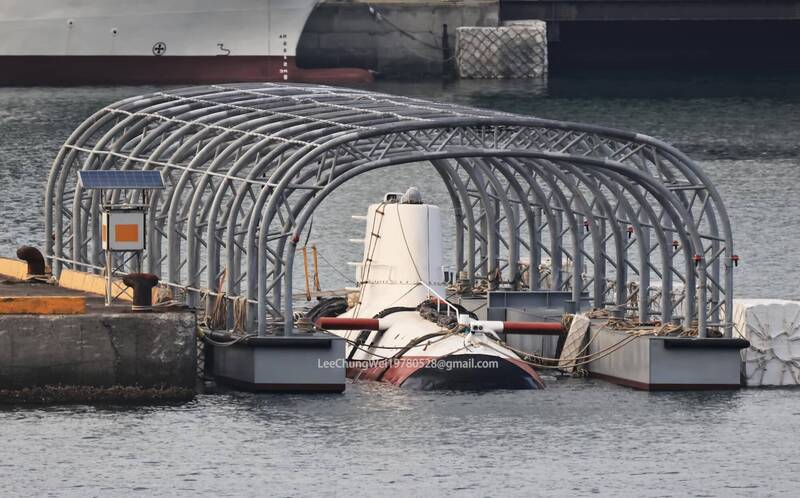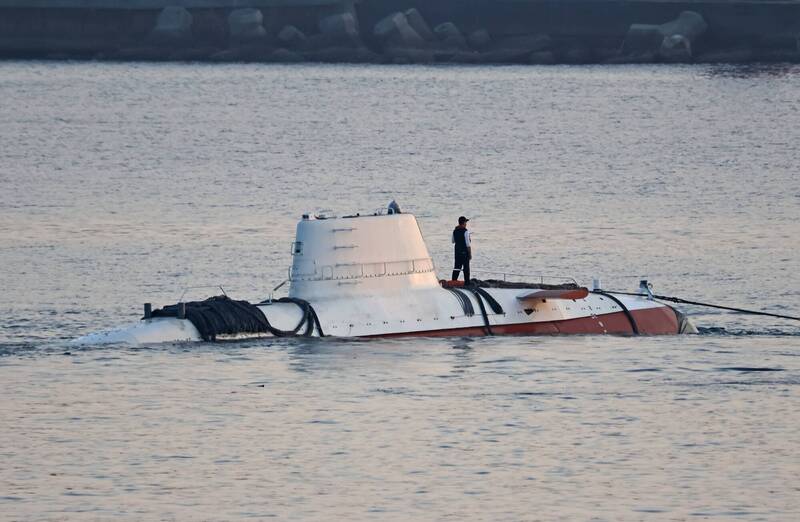Summary of Taiwan Unmanned Submarine Development
1. The "Huilong" underwater unmanned test vehicle, jointly developed by the Chinese Academy of Sciences and Longde Shipbuilding, has begun its first sea trials.2. Recent high-resolution photos show the vehicle's nearly complete surface structure, resembling a small submarine with a white paint surface.
3. The vessel is equipped with two types of camera lenses on its bow and sail cover, likely for visible light and thermal imaging.
4. The "Huilong" project was officially launched in 2020, with the vehicle reportedly having a displacement of about 100 tons, a length of 30 meters, and a width of 6 meters.
5. While not an armed combat submarine, the "Huilong" is designed as a test platform to verify scientific research projects and develop key technologies for both military and civilian use.
6. The development of "Huilong" coincided with China's "Hai Kun" submarine project, both of which have recently undergone testing.
7. The article mentions that the research and development results from this project could have potential applications and reference value for future underwater technologies.
It's worth noting that there seems to be some confusion in the article, as it initially refers to the vehicle as Chinese but later mentions it as Taiwanese. This discrepancy might be due to multiple sources or a translation error.
"Huilong" unmanned submarine appears again! High-definition photos of factory and sea trials exposed - Free Military Channel
The "Huilong" underwater unmanned test vehicle jointly built by the Chinese Academy of Sciences and Longde Shipbuilding was witnessed by the outside world yesterday and today as being completed and shipped out of the factory, and sailed to sea under its own power, preparing for its first sea test. (Provided with authorization by Li Zhongwei)
[Reporter Liu Yujie/Taipei Report] The "Huilong" underwater unmanned test vehicle jointly built by the Chinese Academy of Sciences and Longde Shipbuilding was witnessed to be completed and shipped out of the factory yesterday and today, and sailed out to sea under its own power, starting its first sea test. Judging from the newly exposed appearance of "Huilong", its water surface structure is almost complete and its appearance details are quite clear , resembling a small submarine .
The "Huilong" underwater unmanned test vehicle was developed at a similar time to the Chinese-made "Hai Kun" submarine . After the Hai Kun was completed and launched, the "Huilong" was also tested near the port last month. Military fans witnessed yesterday and today that "Huilong" was moored in a small floating steel shed. Most of the black cloth on the sail cover section and the upper part of the hull was removed, revealing a conspicuous white paint surface; then, "Huilong" "Leave the berth, sail out of the port under the guidance of personnel, and start the first sea test operation.
It can be seen from the latest exposed photos that there are two types of photography lenses on the bow tie ring and the rear section of the sail cover of the "Huilong" ship. It is speculated that they may be visible light and thermal imaging. The entire exterior of the hull is welded with railings or Pipelines, no other more conspicuous surveillance equipment was seen. Judging from the section of the elevator, the bow of the ship is located on the side above the water and is covered with black cloth, which was not removed until it went to sea.
It can be seen carefully from the latest photos that there are two photographic lenses on the bow tie ring and the rear section of the sail cover. It is speculated that the two may be visible light and thermal imaging. Judging from the elevator section, the ship's bow is located in a higher floating position. One side emerged from the water and was covered with black cloth. (Provided with authorization by Li Zhongwei)
"Huilong" is an underwater unmanned test vehicle jointly developed by the Chinese Academy of Sciences and Longde Shipbuilding and named "Huilong Project". Development was officially launched in 2020. According to external rumors, the displacement of this underwater platform is close to 100 tons. , length and width are 30 meters and 6 meters respectively. It was officially completed at the end of last year.
The government's research and development of the " Huilong " underwater unmanned test vehicle aims to draw on new domestic academic research, develop key technologies for both military and civilian use, and expand the use of marine resources. As for the future planning and use of the "Huilong" underwater unmanned test vehicle, it is understood that although the boat is a test platform that can verify a number of scientific research projects and is not an unmanned combat submarine equipped with weapons, the results of this research and development It still has certain reference value and potential application flexibility.
Taiwan's Hailong Unmanned submarine begins sea trials new high-resolution images released
According to information
published by The Liberty Times on September 11, 2024, the Hailong
underwater unmanned test vehicle, a collaboration between Taiwan's
National Chung-Shan Institute of Science and Technology (NCSIST) and
Lung Teh Shipbuilding, was spotted leaving the dock and embarking on its
first sea trials.
Follow Army Recognition on Google News at this link
Artist rendering of a submarine. (Picture source: Generated by AI)
New high-resolution images reveal the vehicle in detail as it sailed under its own power, showcasing a nearly complete surface structure that closely resembles a small submarine.
The development of the "Hailong" unmanned underwater vehicle coincided with Taiwan’s domestically produced "Haikun" submarine, which was launched last month. Following the Haikun's debut, the Hailong was also seen undergoing tests near a local port. Military enthusiasts observed the Hailong moored in a small floating steel shed over the past two days, with most of its coverings removed, revealing a stark white hull. It was later guided out of its berth to begin its maiden sea trial.
In the latest photos, the front of the vehicle and the rear of its sail are equipped with two visible cameras, likely for optical and thermal imaging. The outer hull is fitted with railings and various piping, although no conspicuous surveillance equipment was visible. Based on the rudder profile, the bow appears to be positioned higher out of the water and remained covered by a black cloth throughout its journey to sea.
The "Hailong" project, initiated in 2020, aims to serve as a testing platform for Taiwan's domestic research and development in underwater technologies. Rumored specifications suggest a displacement of nearly 100 tons, with a length of 30 meters and a width of 6 meters. The vehicle was reportedly completed at the end of last year.
While the Hailong is primarily a testing platform designed to verify multiple scientific projects rather than a weaponized unmanned combat submarine, the development still holds significant potential for future applications, particularly in both military and civilian maritime research and technology.




No comments:
Post a Comment